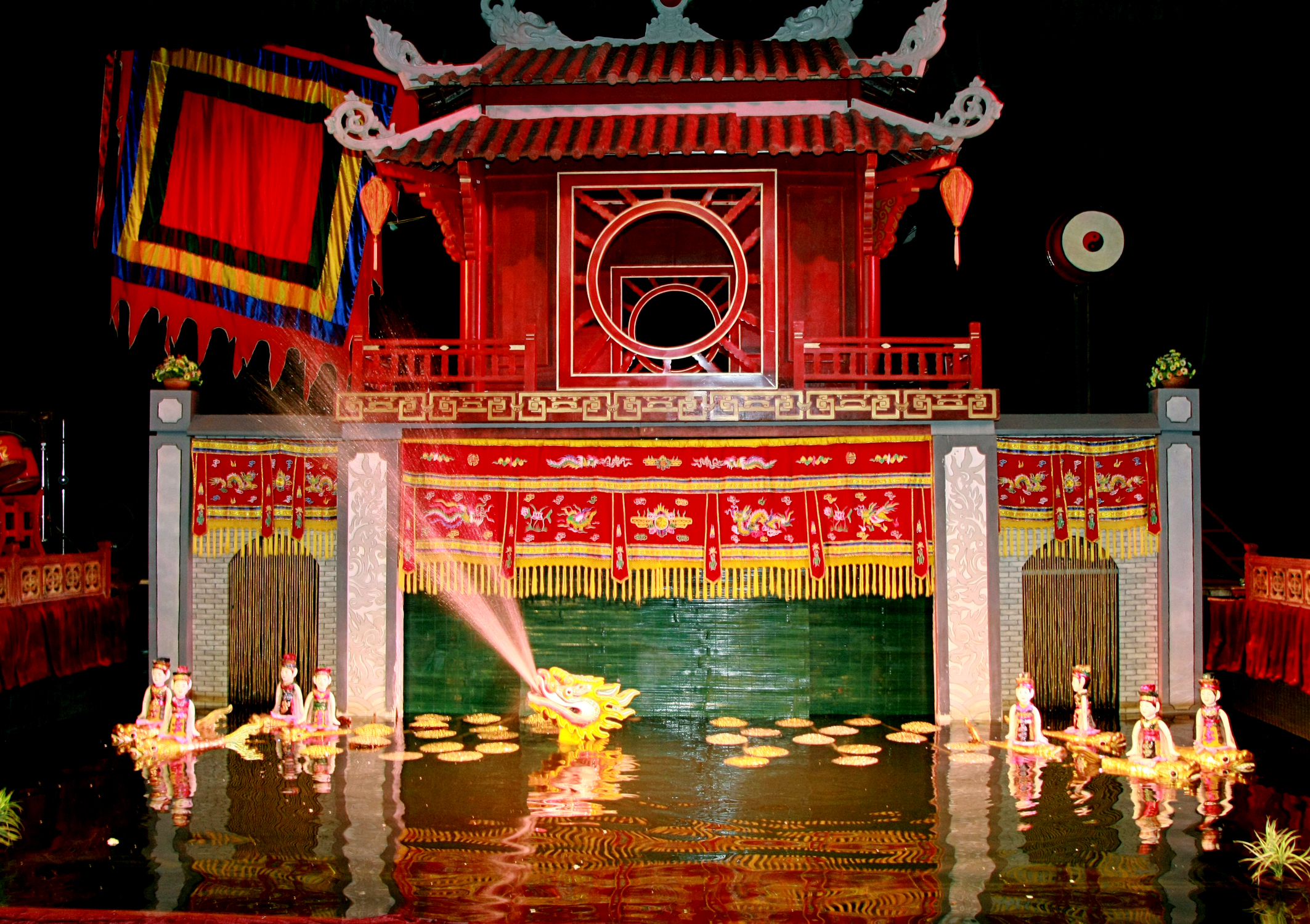

Noteworthy is that in the procession the tablet and white horse of Da Phuc must go ahead those of the Thuy Khue. Each village carries its own tutelary god’s tablet. Covering under a yellow cloth, the colour of the outfits worn by those having supernatural powers, the tablet is carried by four representatives from the four villages mentioned above. The procession of Tu Dao Hanh’s worshipping tablet takes place on the 7th day of the third lunar month, with the participation of four villages Thuy Khue, Da Phuc, Sai Khe and Khanh Tan. The rite of cleaning objects of worship comes after this statue bathing ritual. The cloths are also torn into smaller pieces to divide among the people as they are thought to have the power of warding off the evils. When the ritual ends, the used water, the holy water the Buddha bestows, will be scattered all over the pagoda in a wish for bumper crops and prosperous life. Those standing around solemnly hold their hands in front of their chests, whispering Buddhist sutras. Pieces of red cloth are used to clean the statues. Buddhist monks and the people participate in the ritual. The statue bathing ritual takes place before the opening of the festival. The Pagoda is cleaned and incenses, candles lit, bringing about a charming scene.

Several days prior to the festival, Buddhist followers and pilgrims far and near flock to the pagoda, further adding to the boisterous atmosphere of the festival. The Thay Pagoda Festival is held on the seventh day of the third lunar month in remembrance of his merits. He had outstanding merits regarding the popularization of the religion, the treatment of diseases for people and the creation of many games original to Vietnam, including water puppetry. Tu Dao Hanh was a Buddhist monk in the Ly Dynasty. Objects of worship: Buddhist monk Tu Dao Hanh – founding father of the water puppetry in Vietnam.Ĭharacteristics: The procession of the worshipping tablet, water puppetry and so on. Place: Thay Pagoda (Thien Phuc tu), Sai Son Commune, Quoc Oai District, Hanoi Capital. End the services.Time: From the 5th to the 7th day of the third lunar month, main festival day on the 7th day of the third lunar month. On the spectacular mountain scenery of Sai Son, Thay Pagoda appearing in the tranquility under the dim mist will certainly offer tourists special impressionsġ7:30 Drop guests at hotel.

Thay Pagoda with the beauty of the natural landscapes and the historical – cultural values actually creates a tourist attraction in Hanoi. The pagoda is associated with the name of Monk Tu Dao Hanh, who had great success in teaching and healing the locals as well as organized and established wrestling and water puppetry. It is the charming natural scenery with the landscapes looking like the Penglai world. Go around the village to visit some cultural and historical vestiges in Duong Lam such as: Princess Mia palace and temple, Mia pagoda.ġ2:30 Enjoy a special Vietnamese lunch in an ancient house.ġ5:30 Thay Pagoda, also known as Master Pagoda, is situated in two villages, namely Da Phuc and Thuy Khue.

Walk along village road to visit Son Dong communal house and survey Viet traditional culture with the cult of fecundity.ġ0:15 Arrive Duong Lam, visit village gate, Mong Phu communal house, and some ancient houses and enjoy local products: rice wine, rice cake. Visit some households in the village see mastered the technique of making wooden statues. The Son Dong wooden statues are present in many pagodas and communal houses in the Northern provinces. 08:00 Guide and car pick up guests at hotel then transfer to Duong Lam ancient village about 50km away from Hanoi.Ġ9:00 Stopover on the way to visit Son Dong traditional sculpture village.


 0 kommentar(er)
0 kommentar(er)
